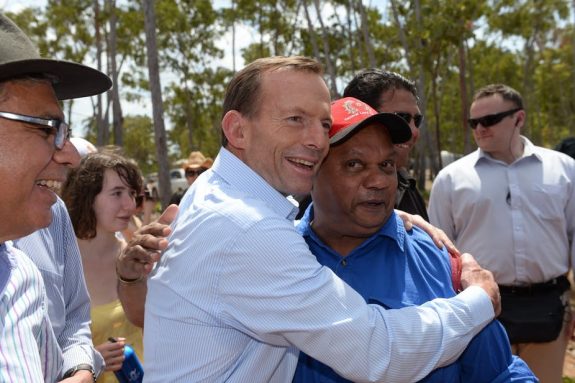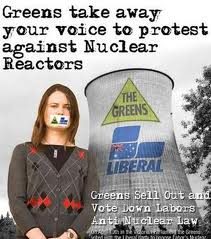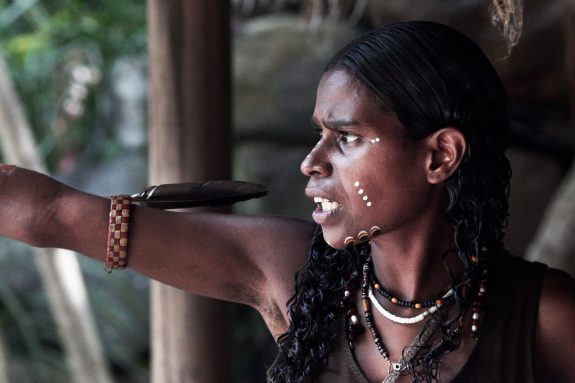Is fascism creeping into Australia?
There are clearly no Fascist regimes in Australia, or any regime with even the slightest of Fascist agendas. We’re a luckier country than that.
Broadly speaking, Fascism is:
A system of government marked by centralization of authority under a dictator, stringent socioeconomic controls, suppression of the opposition through terror and censorship, and typically a policy of belligerent nationalism and racism.
This clearly does not exist in Australia.
But as this guest post by Paul Cannon disturbingly points out, the ‘rhetoric and behaviour’ of the current federal government (and state governments) could easily have us believe otherwise.
Does it matter if democracy shifts to the right? That depends on where you stand politically. But if the shift is extreme then I think it is of grave concern. And what concerns me even more is the tendency to ignore the shift.
If you don’t look closely you never really notice it or generally laugh it off.
The Fourteen Defining Characteristics of Fascism by the author Lawrence Britt, originally published in Free Inquiry Magazine Vol. 23, No. 2, Spring, 2003 are worth noting in regard to current politics in the west These fourteen points are similar but not the same as those published by the author Umberto Eco in 1995, which are also worth reading.
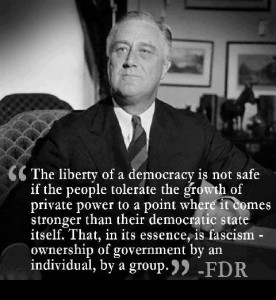
Image from sodahead.com
Of course, immediately some of you have retreated, because every time the issue of Fascism comes up it is considered passé or too sensational (you can’t say that!) or irrelevant (don’t be ridiculous that was then) and therefore such a comparison to today should not be used. But I believe we hide our heads in the sand when we ignore the trend, even when it is a niche or even isolated elements showing up. Fascism wasn’t closed off in 1945, indeed it continued in Latin America, Spain and Portugal, and periodically in Italy long after the war. It shows up in mass movements across Europe like the British Defence Force, the National Front, and recently UKIP, to use England as just one example. In defining fascism one should avoid Hollywood movies as signifiers of what Fascism actually is and what it looks like. For Fascism to exist today, it cannot be as it was, we have to look for the essence in what is happening now and to ask – what clothes is it wearing?
I am not looking to review Fascism historically, or to dwell on the symptoms of historical Fascism but rather to look at the structure of Fascism and what might be happening now.
Fascism is not by definition totalitarian, it can use that form of governing, but it can be present in democracy. So let’s not be fooled by trying to say its nothing like 1920, or 1933 that is merely a smokescreen.
Fascism developed in Italy. The term Fascism derives from ‘fasces’ the Roman symbol of collectivism and power (a tied bundle of rods with a protruding axe). The Italians also had a description for the concept of Fascism, Benito Mussolini stated that Fascism was ‘estato corporativo’ which means the corporate state (a view also promoted by Othmar Spann in Austria). Fascism is a pretence or veneer of “socialism” or collectivism controlled by capitalism which is in partnership with government (much the same as National Socialism in Germany).
Lawrence Britt studied the National Socialist regime of Germany (Hitler), the Kingdom of Italy (Mussolini), Nationalist or Francoist Spain (Franco), the Military Government Junta of Chile (Pinochet) and other Latin American regimes (Argentina, Paraguay, El Salvador, Brazil), and New Order in Indonesia (Suharto). What Britt found was fourteen defining characteristics as follows:
1. Powerful and Continuing Nationalism: Fascist regimes tend to make constant use of patriotic mottos, slogans, symbols, songs, and other paraphernalia. Flags are seen everywhere, as are flag symbols on clothing and in public displays.
2. Disdain for the recognition of human rights: because of fear of enemies and the need for security, the people in fascist regimes are persuaded that human rights can be ignored in certain cases because of “need.” The people tend to look the other way or even approve of torture, summary executions, assassinations, long incarcerationsof prisoners, etc.
3. Identification of Enemies/Scapegoats as a Unifying Cause: the people are rallied into a unifying Patriotic frenzy over the need to eliminate a perceived common threat or foe: racial, ethnic or religious minorities; liberals; communists; socialists, terrorists, etc.
4. Supremacy of the Military: Even when there are widespread domestic problems, the military is given a disproportionate amount of government funding, and the domestic agenda is neglected. Soldiers and military service is glamourised.
5. Rampant Sexism: the governments of fascist nations tend be almost exclusively male dominated. Under fascist regimes, traditional gender roles are made more rigid. Divorce, abortion and homosexuality are suppressed and the state is represented as the ultimate guardian of the family institution.
6. Controlled Mass Media: sometimes the media is directly controlled by the government, but in other cases the media is indirectly controlled by government regulation, or sympathetic media spokespeople and executives. Censorship, especially in war time, is very common.
7. Obsession with National Security: fear is used as a motivational tool by the government over the masses.
8. Religion and Government are Intertwined: governments in fascist nations tend to use the most common religion in the nation as a tool to manipulate public opinion. Religious rhetoric and terminology is common from government leaders, even when the major tenets of the religion are diametrically opposed to the government’s policies or actions.
9. Corporate Power is Protected: the industrial and business aristocracy of a fascist nation often are the ones who put the government leaders into power, creating a mutually beneficial business/government relationship and power elite.
10. Labour Power is Suppressed: because the organising power of labour is the only real threat to a fascist government, labour unions are either eliminated entirely, or are severely suppressed.
11. Disdain for Intellectuals and the Arts: fascist nations tend to promote and tolerate open hostility to higher education, and academia. It is not uncommon for professors and other academics to be censored or even arrested. Free expression in the arts and letters is openly attacked.
12. Obsession with Crime and Punishment: under fascist regimes, the police are given almost limitless power to enforce laws. The people are often willing to overlook police abuses and even forego civil liberties in the name of patriotism. There is often a national police force with virtually unlimited power in fascist nations.
13. Rampant Cronyism and Corruption: fascist regimes almost always are governed by groups of friends and associates who appoint each other to government positions and use governmental power and authority to protect their friends from accountability. It is not uncommon in fascist regimes for national resources and even treasures to be appropriated or even outright stolen by government leaders.
14. Fraudulent Elections: sometimes elections in fascist nations are a complete sham. Other times elections are manipulated by smear campaigns against or even assassination of opposition candidates, use of legislation to control voting numbers or political district boundaries, and manipulation of the media. Fascist nations also typically use their judiciaries to manipulate or control elections.
In relation to Australia we can immediately rule out 1 (although even here there is the false mantra that refugees are illegal) 11, 13, and 14. And with 4, 6, and 8 there are identifiable elements but not the whole.
But the rest 2, 3, 5, 7, 9, 10, and 12, half, are certainly present in the current federal government rhetoric and behaviour. And if you add elements of 4, 6 and 8, there is a strong shift to the right with a sense of an essence of fascism pervading.
In the current federal government there is:
– a complete disdain for human rights (treatment of indigenous communities, gay people, people who need welfare support payments, disability pensioners, refugees);
– they have manipulated the population by identifying an enemy and scapegoats (“terrorists”, Muslims, refugees);
– the military is not supreme but it is being utilised for civilian purposes, therefore it has been elevated (customs and border control, the indigenous intervention); there is sexism (as demonstrated by Abbott, Pyne and Bernadi among others), and to add – Umberto Eco writes that fascism thrives on creating fear over difference;
– there is a sense of control by cronyism with media, and there is censorship in regard to the refugees coming by boat;
– there is an obsession (pathological) with national security;
– religion is not intertwined but members of the government use their religious affiliation as a bargaining point and they use religious rhetoric to push agendas (Bernadi on the traditional family – whatever that was or is);
– corporate power is definitely protected, even exclusively with environmental considerations, workers rights, and community needs overlooked;
– the corollary is that labour power is suppressed by legislative means;
– there is an unmitigated obsession with crime and punishment (this would be more true of State rather than Federal government but it is present in both).
Umberto Eco makes the point that the very first appeal of a fascist movement is the appeal against the intruders (find a scapegoat and you control a large portion of the voting public).
So is Australia Fascist, well no, not in the historical sense of 1920 or 1933, but there is an alarming trend towards fascist methodology (whether overtly or otherwise) and there is a trend towards corporate control, which is a move away from the rights of groups and individuals, and there is a disregard for our international treaty obligations. The government clearly uses manipulation of the population as to be judged by the government rhetoric that is parroted back on talk back radio by the public often couched in fear ( the refugees would be the clear issue here). There is a disdain for the environment too. And in the proposed education review there is a desire by the education minister to go back in time in terms of how we present contemporary history, labour history, indigenous history, international history (it was Herman Goerring who liked the phrase “when I hear the word culture I reach for my gun”).
The fourteen points demonstrate that what is at stake is freedom, language, history, culture, national identity, and human rights. Fascism is an attitude, albeit a political one, but one that pervades the way governments think and behave.
With seven of the fourteen points by Britt recognisable in current government action and rhetoric there should be more concern in the community about our identity as a nation and therefore our future as a nation. Umberto Eco puts it well when he says “Ur-Fascism is still around us, sometimes in plain clothes.”
Bibliography:
Giorgio Agamben. ‘Homo Sacer Sovereign Power and Bare Life’ California, Stanford, 1998
Giorgio Agamben. ‘State of Exception’ Chicago, Chicago Press, 2005
Hanna Arendt ‘The Origins Of Totalitarianism’ Florida, Harcourt, 1968
Umberto Eco. ‘Eternal Fascism: Fourteen Ways of Looking at a Blackshirt’ New York Review of Books, 1995, pp. 12 – 15.
Roger Griffin. ‘The Nature of Fascism’ Oxon, Routledge, 1993
This article was first published on Paul’s blog Parallax and reproduced with permission.

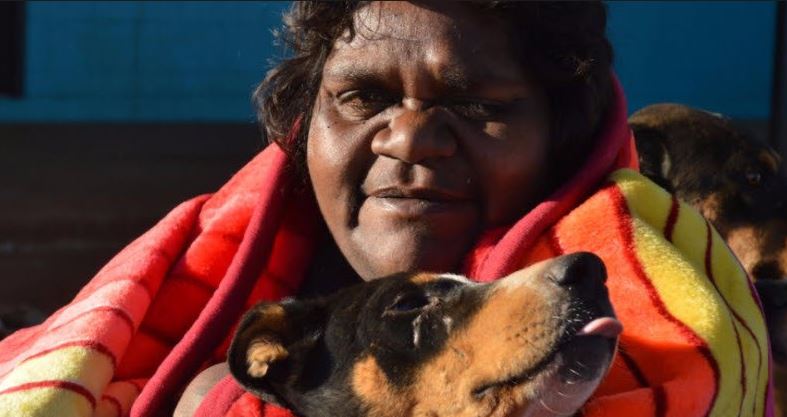












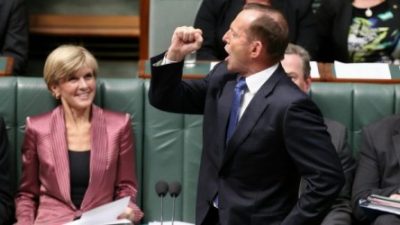
 Ms Anna Burke
Ms Anna Burke Tony Abbott
Tony Abbott